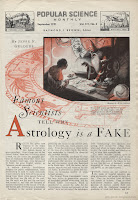I know, I know. You don't get anime. That's fine. Even though Cowboy Bebop is the only anime show that seems to be made for grownups and carefully avoids all the weirdnesses that would turn off the casual viewer, you completely don't have to watch the series to understand how good the music is. Also, the English dub is so well-performed you could forget it was ever in a different language in the first place, which is a rare, rare thing among anime dubs.
 |
Yoko Kanno, as she would be called in the States. In Japan, you
would call her Kanno Yoko - Family name first, and then your
own name. Kind of a nice idea. This is how it is in most of Asia.
|
Enough talk! Stare with your ears. Here is the opening title sequence to the TV show. The theme song is called Tank!
More. This is Rush, also on the O.S.T. 1 album (which stands for Original Sound Track, by the way).
The recordings have a retro sound to them that is definitely not accidental. Ever since roughly The Sixties, audio engineers will tend to record a band by "close mic'ing" them, with each horn getting its own microphone, sometimes shoved deep into the bell of the instrument. This reached its height of popularity in The Seventies. This is how you get that sound that each instrument is sitting right inside your head. A good example of close mic'ed horns can be heard in pretty much any studio album by Steely Dan, but here's My Old School. Notice how the horns sound like you're sitting right in front of them. This is the sound of The Seventies. Tight and dry, with little or no reverb.
With these Cowboy Bebop recordings, you can hear a lot of "room ambience". The musicians were very likely recorded by two microphones (gotta have stereo separation!) positioned overhead, covering the whole group. This has the effect of letting you hear the whole band, as they sounded in a large room. This is how things were done up until the early Sixties and for the whole of recording history before then. By using this recording technique, Kanno further positions her musical sound in the past, giving it a retro feel that you definitely perceive, maybe without realizing it. This method is sometimes used today, whenever the engineer wants to get a more natural sounding recording, or "that retro sound".
Oof. A quick check of Amazon shows us that pretty much any Seatbelts CD is going for thirty to fifty dollars, apparently because they're only available on an import basis. Shit. This is not a reasonable first-time purchase for the casual listener. Maybe if you're resourceful you can find it some other way, or maybe one one of your new-to-medium-fangled streaming services?
As long as we're through the looking glass of outrageous music prices here, let's watch just about the coolest chase scene ever committed to film and the accompanying song, What Planet is This. The song is on a different and similarly outrageously overpriced album, the soundtrack to the Cowboy Bebop Movie, released in 2003, Cowboy Bebop O.S.T. Knockin' on Heaven's Door / Future Blues. Skip to 1:13 when the scene kicks into high gear as the music starts, or watch from the start to see all the hand-drawn tracer fire and smoke trails you can possibly see. Sorry we couldn't find this clip on FaceTube with the English dub.
As music recommendos go, this one is getting depressing. No one should be asked to pay forty-ish dollars for a frikkin CD. Maybe this year's Surprise Pointy Tree Day Card CD Gift needs to have a few of these easy-to-find-but-expensive-to-buy tracks on it? Food for thought.
























































